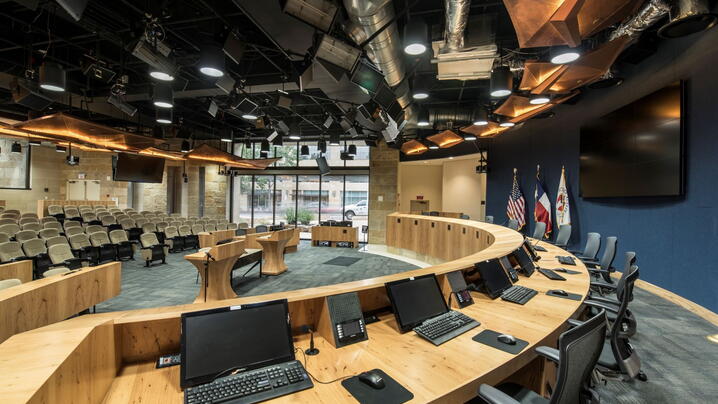
With the emergence of COVID-19, the past few weeks have witnessed a flurry of activity around the delivery of essential municipal services. How do local governments continue operations when city, county, and town halls have been shuttered to public meetings? How do officials continue to make time-sensitive decisions, while at the same time ensuring the safety and wellness of employees, community leaders, and decision-makers? Local government officials have acted quickly to implement protocols and procedures for staff to work remotely and for the business of the municipality to be conducted by persons outside the four walls of town hall. But the process of local government requires that citizens have input and participation in the deliberation and decision-making process. How have local governing bodies adapted to affording the public an opportunity to be engaged and participate in this new paradigm of local governing? Where to begin?
ICMA staff observed how small, large, urban, and rural cities, counties, and towns adjusted to this new remote existence and have compiled some best practices to share. But before that, what are some key questions to answer and other factors to consider?
1. What platform should we use?
There are a variety of choices out there, some are free and some require purchase. All will depend on having the proper IT equipment and connections. Zoom, Collaborate, WebEx, YouTube, startmeeting.com, Skype, Pro-Connect, Slack, Microsoft Teams, Facebook Live, are just a few being used. Be careful to research any restrictions each platform may have, such as time or participant restrictions. If moving online is currently unavailable to you, the city of Worthington, Ohio, implemented social distancing measures at its city council meeting by seating public, council, and staff six feet apart.
2. Is there a low-tech solution?
It is possible to conduct business and solicit feedback without a platform. The town of Easton, Massashusetts, asked residents to call into a conference line number and placed the local cable access microphone by the conference phone. Connor Read, town administrator, said “Having a bare-bones and low-barrier for entry was helpful.” The city of Palo Alto, California, asked residents to view online and email questions and testimony. It is can be useful for residents to have an easy solution to engage. Some communities also reported success streaming meetings using WebEx and YouTube for comments with a direct feed by their cable access.
3. Determine what meetings you can and can’t cover.
During this time of uncertainty, you can’t hold every board and committee meeting. Only essential business should be happening for the immediate short-term. In most cases, the most critical are going to be the executive authority (council, commissioners, select boards), local health commissions, and any emergency planning committees, if appropriate. The city of Maplewood, Minnesota, has canceled most of its board and commission meetings over the next few weeks while continuing with scheduled city council meetings.
4. Legal requirements still apply.
Post the agenda, record the meeting, take minutes. These requirements still exist whether the meeting is held remotely or not. Most states have or are in the processing of developing guidelines for how public bodies should operate during the next several weeks, and some of these guidelines might change. For example, Pennsylvania’s Office of Open Records and the California Governor relaxed requirements to allow municipalities to host online official meetings via two-way communication platforms. Keep in contact with your state office for changing requirements.
5. Pre-testing/trial runs are critical.
Many first-time users of remote meetings reported epic fails. Make sure you leave enough lead time to become familiar with how it is used for you, your staff, and your elected officials. One community had a trial run with a small committee before it did its first large council meeting.
6. Have a script for public participation at the meeting and the rules for engagement.
The town of Arlington, Massachusetts, created this guideline for both elected officials and the public for conduct of its meetings and public participation. Keep the instructions simple and easy to understand. Failure to mute audio or loud feedback can sabotage even the best laid plans to involve the citizenry.
7. Staffing.
Have extra staff on hand to monitor questions from the public and act as troubleshooters during the meeting. This allows the manager to be focused on working with officials during the meeting to get the business agenda accomplished.
The need for managing staff and operations from dispersed locations for an indeterminate amount of time arrived with scant warning. But as local government managers we regularly encounter the unexpected, unanticipated, and untested. And in this new area of service, we will succeed as well.
For additional information, visit ICMA’s Coronavirus Resource page.
New, Reduced Membership Dues
A new, reduced dues rate is available for CAOs/ACAOs, along with additional discounts for those in smaller communities, has been implemented. Learn more and be sure to join or renew today!
